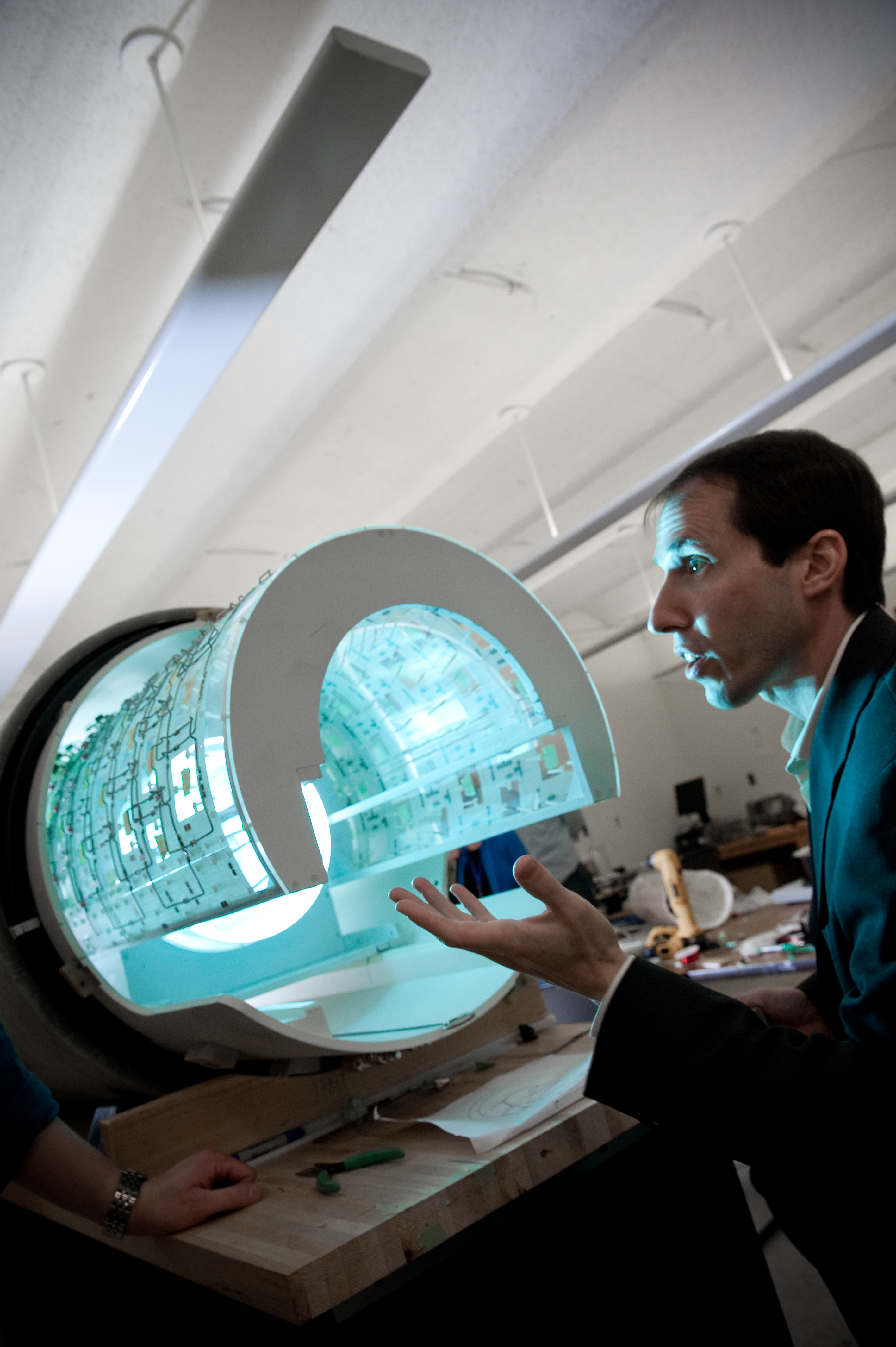
By AKSHAY CHAUDHARI
The MRM Highlights team was at the Center for Biomedical Imaging at New York University and got a chance to sit down with ISMRM President, Dan Sodickson. We had a great conversation with Dan ranging from his beginnings with MRI research all the way to the recent strategic initiatives of the ISMRM.
MRMH: Turning back the page a few years, could you tell us how you got started with MRI research in the first place?
DS: My beginnings in MR were anywhere but in imaging. I had a background in physics, and my graduate work involved developing methods for molecular structure determination, which had absolutely no direct medical application whatsoever. However, when I found myself in medical school (a story of serendipity for another time), I did a month-long preceptorship rotation — a structured shadowing program — in the lab of cardiac imager Dr. Warren Manning. Warren sat me down and said that, as a focus for my time with him, I could look into anything that interested me about cardiac MRI. I started exploring, and soon got stuck on why one couldn’t image faster in cardiac MRI, since cardiac motion was clearly a challenge, and since it is generally considered bad form to stop the heart if we want to image it. Because I knew absolutely nothing about imaging, I started asking what it was that set the fundamental limits of imaging speed, and over the course of the month I stumbled on the idea of sampling multiple lines of k-space at once. I came across an article about RF coil arrays, and it occurred to me, after some casual doodling, that if we had a bunch of coils with distinct sensitivity profiles, then we could generate a signal modulation that resembled the spin modulation produced by a magnetic field gradient. I wrote up a brief research proposal, handed it to Warren, and asked him on the spot if he could take me on as a postdoc. To my surprise, he did! I am eternally grateful for the opportunity Warren gave me to explore a new idea and a new field. So that was my entry into imaging. My ignorance clearly gave me an advantage. I didn’t know which questions were too stupid to ask, and the question about imaging speed was one of the most fortunate stupid questions I have ever dared to ask. Which is why I tell my students not to listen to me too carefully, but, rather, to take advantage of their ignorance.
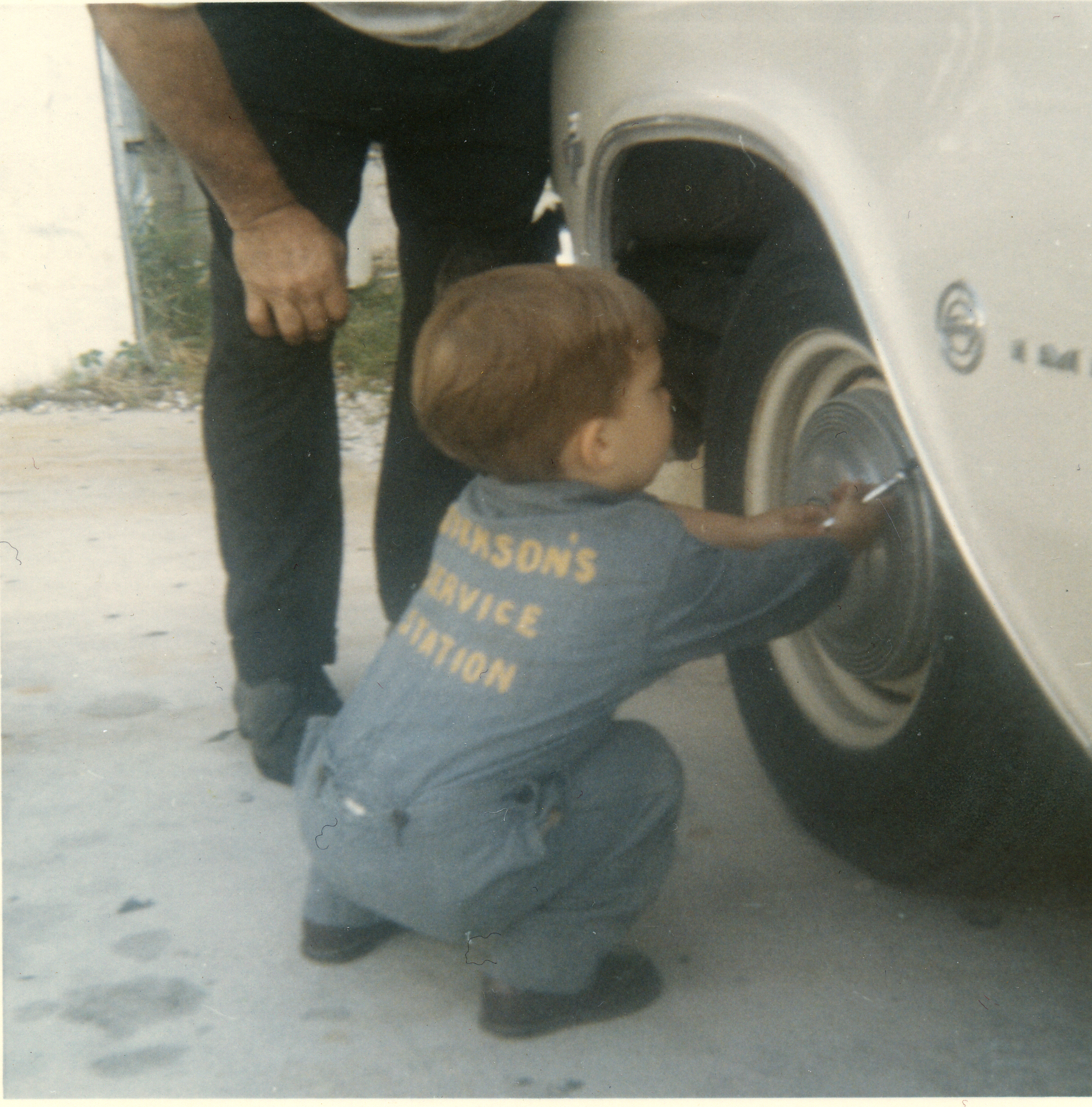
MRMH: Here you are alluding to the simultaneous acquisition of spatial harmonics (SMASH) method. How was that initially received?
DS: I think that two categories of early responses were captured nicely in two opposing reviews I got for the first MRM paper I submitted, introducing SMASH. One reviewer said, more or less, that the idea was crazy and would never work. The other said that he/she had done the same thing ten years ago. So I was tempted to respond simply by asking the two of them to talk to one another.
There were, however, other more encouraging responses. For example, Mark Griswold, who was working at the time with Bob Edelman and whom I had met in my first few months at Beth Israel Deaconess Medical Center, immediately saw the potential of SMASH, and we started working together. Bob himself was an enthusiastic supporter. Peter Jakob was also working at Beth Israel, and he soon became a third musketeer and eventual architect, with Mark and me, of AUTO-SMASH.
The ISMRM meeting in Vancouver (1997), where we had a couple of posters and a talk on SMASH, was very gratifying, though the lead-in to the meeting was definitely a learning experience. Mark’s abstract, on an early application of SMASH, was selected for a talk. My abstract introducing the technique was relegated to a poster (and was unceremoniously rejected from the Young Investigator Award competition – a lesson in humility and persistence that I also try to share with students). Mark kindly encouraged me to give the talk in his place, which I did, with the support of the Beth Israel team along with copious quantities of antacids to combat nerves. From that point on, the game was afoot. There was a crowd around the SMASH poster for the remainder of the conference. I remember a particularly pointed discussion with Pete Roemer – the guru of coil arrays, and an author of the paper that had sparked my early doodles – who said that the idea was solid, but the SNR calculations were wrong. This was a direct motivation for one of our next papers, on SNR in SMASH.
So there was a lot of enthusiasm to work with, but still a fair amount of resistance remained. My first experiences presenting SMASH to colleagues in industry were particularly heavy on the skepticism: I remember lots of crossed arms and dour faces at first. Then competition started to appear, and the ensuing back and forth started to win over the skeptics. Klaas Pruessmann and Markus Weiger had spent time at the SMASH poster in Vancouver, and they came up with the rudiments of SENSE on a canoe trip following the meeting. Over the next few years, there followed a kind of tennis match, with advocates of the two techniques battling it out over which one was better. Everybody was watching to see who would come out on top, and, in retrospect, this was probably the best thing that could have happened to generate interest. From then on, a whole slue of brilliant people, both in academia and in industry, entered the fray, and parallel imaging was off to the races.
MRMH: Speaking of ISMRM annual meetings, how large was the meeting in Vancouver?
DS: That’s like asking a child how big his childhood room was. For me it felt big. There were thousands of people — but nowhere near the approximately 7000 attendees our meeting attracts today.
MRMH: Do you think that the level of intimate discussions has decreased with an increasing attendance at the ISMRM annual meeting?
DS: The fact that we have grown so much larger is certainly in evidence at the meetings. The poster hall used to feel manageable. Time was, one could stroll among the posters and get an immediate sense of the scope of changes in the field. Now there are so many sessions at once, and so many posters, that I do think some of the early sense of intimacy has been lost. In the Annual Meeting Program Committee (AMPC), we are trying to restore some aspects of the smaller-meeting feel, with initiatives such as program chair Karla Miller’s brilliantly-conceived and highly successful Secret Sessions. Even though it is harder nowadays to take the full measure of the meeting, the old face-to-face magic still happens in hallways and meeting rooms and exhibition-hall alleyways around the convention center.
MRMH: How does this connect to some of the overarching issues that the ISMRM may be facing?
DS: In some ways, scope and pace are indeed dominant concerns, not only in our field, but in the world at large. I feel that the issues facing our Society and our field are more dramatic, more exciting, and more existential than they have ever been. We are living in a rapidly changing world. This is something that is certainly clear to our young investigators, but has also struck any number of senior members. The world is changing so fast, in fact, that, if we don’t choose our way forward well, we run the risk of losing much of our energy and our relevance. We in the ISMRM are arguably at the height of our powers – look at all the high-impact innovations we have introduced, and look at all the fields we have influenced. But, at the same time, consider the insanely fast rise of AI nowadays, not to mention the advent of modular electronics, cheap sensors, and modern software platforms. Consider also the industrial landscape. Tech companies are moving into healthcare, and our traditional industry partners are reinventing themselves day by day. There are also dramatic economic forces driving change, including relentless downward pressures on reimbursement rates for imaging studies, and seismic shifts from fee-for-service to value-based medicine.
So how do we deal with these disruptive forces? We have undertaken a strategic planning process in the ISMRM this year, and here are four imperatives that are central to our new strategic plan (now available for review and comment by the membership at large): 1) Manage disruptive forces; 2) Marshal disruptive innovation; 3) Connect with the fields around us; and 4) Tell our story. These imperatives reflect some of our longstanding core values of innovation and connection. In order to increase the value of MR in a changing world, however, we must, increasingly, look outwards as well as inwards. Given the maturity of our field and the robustness of our interactions with one another, we risk forgetting that there are forces outside of MR, and forces outside of radiology or even biomedical imaging as a whole, which will shape how we are viewed and valued in times to come. Many people, including top-notch scientists in various disciplines, still think of us more or less as knob twiddlers who minister to the big machines that no-one wants their doctor to send them to. You may be surprised how many otherwise well-informed investigators don’t really know that we can help to answer fundamental scientific questions, as opposed to merely generating pretty, macroscopic pictures. And then there is the general public. Part of the reason there is such pressure to cut reimbursements for medical imaging is because the public does not have nearly as deep an appreciation of the value of imaging, not to mention the value of MR in particular, as we pride ourselves on having. Therefore, it is increasingly essential that we get our story out. “This is who we are, this is what we do, this is the power we bring to healthcare and basic discovery, these are the patients whose lives we save.” In a world increasingly flooded with information, we need to be sure that we are not the only ones who know the things we think we know.
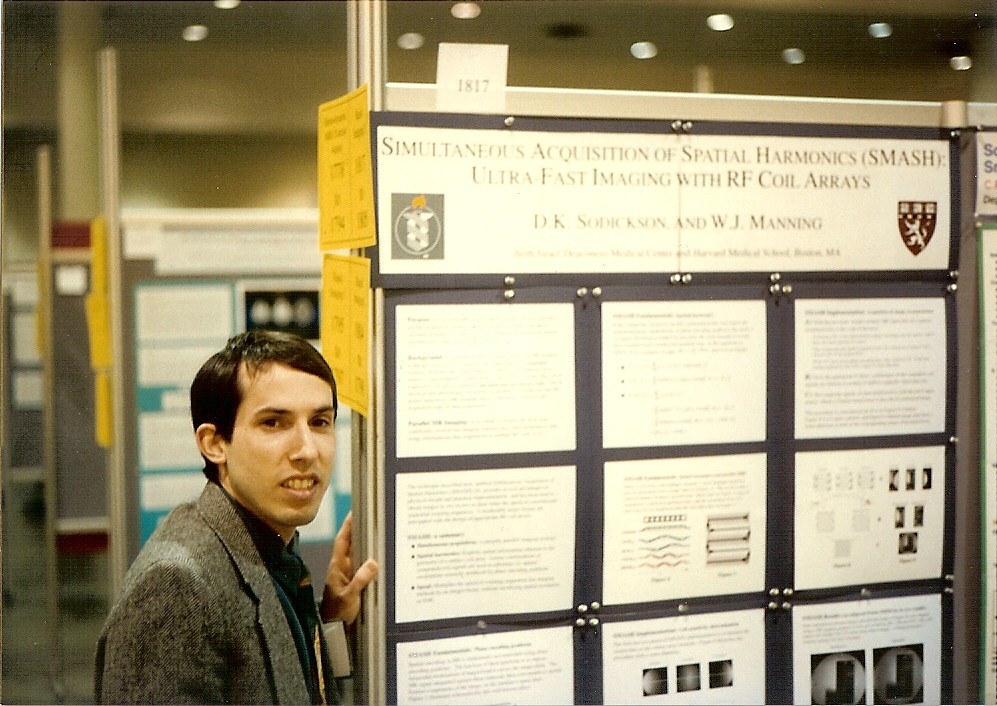
MRMH: What is an effective vehicle to get our story told?
DS: We are looking to our membership to do what they do best, which is to be creative. When I talk to young scientists, each one of them may have 15 ideas, some of which I cannot even begin to understand, for ways to get our story out, using social media and other nimble platforms. If you think about it, most of our communications as a Society to date have been inward-facing, directed towards our membership. We don’t really have well-defined structures to broadcast information outwards to the world around us. MR Pulse is one nice example of the kind of thing we could and should be doing more of. And there are so many other things we can try. We can start inviting press to our meetings. We can prepare lay summaries of some of the key articles that appear in our journals. We can invite ambassadors from other fields to attend our meetings, and then sit down with them and ask them to tell us what they saw, or didn’t see. We can invite our members to go to meetings in other fields, and to report back. Human interest stories are also important – stories in which we can show our value. “Here is a patient whose doctors didn’t know what was wrong, and here is how MR helped to solve the mystery.” That is the sort of thing people in public relations do all the time. I am not suggesting that we all become PR professionals, or that we start caring more about image than about imaging science. I am instead suggesting that we give more attention to precisely how we add value to the human experience, so that we can have the most impact as that experience evolves.
MRMH: You mentioned the word “value” a number of times just now. How does this connect to the ongoing ISMRM initiative on High-Value MR?
DS: Value is, in many ways, the ultimate metric of success for our endeavors. As scientists and as clinicians, we all want to do something of value. The ISMRM Value Initiative, launched by past president Jim Pipe and championed by numerous thought leaders in our Society, aims to focus us on proving as well as improving the value of MR. We are a Society of inventive thinkers, and we love to come up with the next pulse sequence or the next coil design. But do we think hard enough about what the real impact of that sequence or that coil will be in daily practice? Do we take enough care to identify key clinical questions, and to devise new types of scans – whether they be fast, targeted exams of limited scope, or more expansive studies with previously inaccessible information — that address those questions head-on? And do we take the time to document the comparative effectiveness of our innovations in addressing real clinical or research questions?
MRMH: Once we have promising results, how can we really drive changes to clinical practice?
DS: A combination of appropriate partnerships and appropriate focus is called for here. When it comes to clinical translation, it is common knowledge that change is hard, and it is easy to be daunted by all the well-known obstacles to getting a new technique into routine clinical practice: workflow considerations, regulatory constraints, conservative thinking, you name it. These obstacles are all real. But history has also shown that, when there is clear value in a new medical test or methodology, clinicians are not slow in adopting it. An incremental improvement in lesion visibility is nice, but it may not be enough to change longstanding clinical practices. Answering an important clinical question definitively, on the other hand – that will bring early adopters in droves.
At the same time, it is important to remember that a sequence which can generate all the pretty new images in the world will face an uphill battle for adoption if its introduction complicates clinical workflow. In healthcare, the value proposition is always an equation in which benefits are balanced not only against economic costs but also against opportunity costs. In order to manage all this, you need a well-designed method, the right enabling platforms, and the right partners. Indeed, one thing people sometimes overlook is the importance of developing imaging methods together with the stakeholders who will use them. If you, as an MR developer, try to optimize a pulse sequence all by yourself, and then toss it over the wall to clinical colleagues, those colleagues may find pitfalls that send you right back to the drawing board, and your iteration cycle may be measured in years. But if you have clinical colleagues working side-by-side with you as you develop your method, then they can catch key problems before you invest time in fine tuning, and your iteration cycle can be condensed to days or even hours. This is why our ISMRM model of connecting clinicians with basic scientists is so powerful. When the two are embedded together, the chances of translational success are amplified dramatically. Add in some industry scientists who can navigate the landscape of commercially available scanners, and you’re really cooking with gas. This is also why the ISMRM gains so much from connections with industrial partners, such as our longstanding ISMRM Corporate Members.
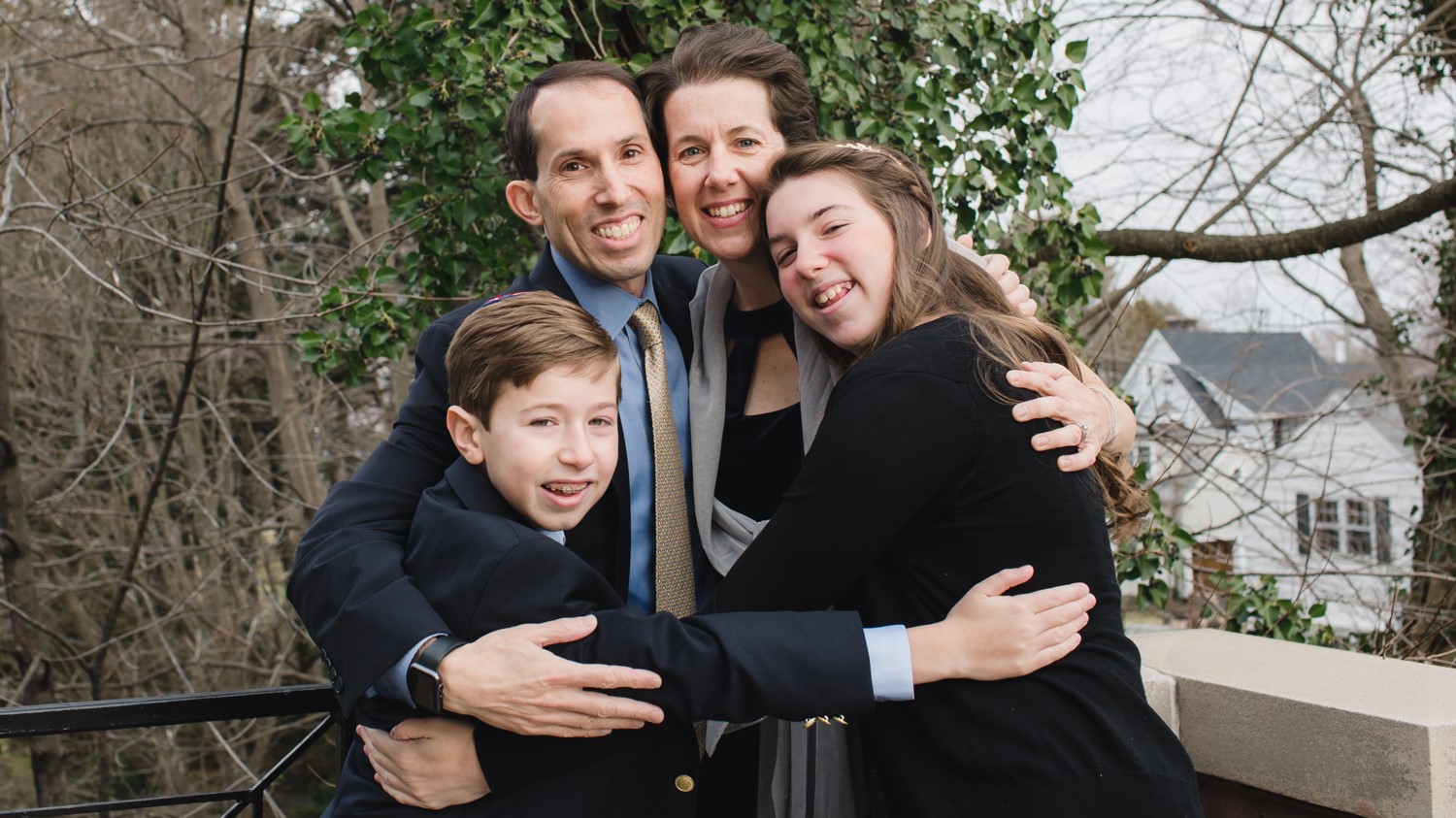
MRMH: On the subject of fast iteration times, advances in AI seem to be radically changing how we perform research. What is ISMRM’s take on these emerging technologies?
DS: The speed at which AI is taking hold is absolutely mind-boggling. I did some searches on the ISMRM website for abstracts relating to machine learning, deep learning, and neural nets. In just one year, between 2016 and 2017, the number of abstracts with these keywords increased by an order of magnitude. Whether or not we’ll see another full order of magnitude this year remains to be seen – we have a finite attendance at our annual meeting, after all – but it is already clear that we will see dramatic increases from last year. When it comes to rapid adoption of powerful new tools like AI, the ISMRM has no need to push our membership: they are right there at the forefront. But we have taken a couple of measures to try to nurture this enthusiasm and creativity. For example, the ISMRM recently put together, in record time, a late-breaking workshop on machine learning, and, sure enough, the workshop was filled to capacity in no time. We’re already planning a follow-up machine learning workshop for this fall. Our idea going forward is to pre-schedule slots for high-profile workshops like this, with topics to be determined at a later time, so that we can be nimble in adapting to late-breaking developments, and not lose currency while we work through logistics.
Moving back to how we tackle AI as a scientific and clinical community, I think that, even as we embrace the new pace, we also must be mindful about our choices. I have seen some of the special teams now being formed in the big Tech companies, and it will be hard to outrace them when it comes to sheer person- and programming-power. These teams are full of creative and motivated data scientists who have grown up on modern software platforms. Even the most accomplished of these data scientists, however, tend to share some of the same underlying assumptions: namely, that data is king, that our images are our data, and that the information content of those images is more or less fixed. We ISMRMers, on the other hand, know that images are completely fungible. Images are just imperfectly-rendered representations of raw acquired data, and those data can be changed to meet our needs. This is what we do in MR research – we do it all the time. What does this mean for AI? It means that we have the capacity to adapt our data to AI, rather than just tailoring AI techniques to read our images. We can change our acquisitions, and even our scanners, not merely to optimize image quality, but rather to enhance the quality of information gleaned by neural nets. And that is not all. We are also the people who take imaging information and try to identify its biological context. So, at the end of the day, we have some diverse and truly critical domain expertise that can add value to the AI enterprise. We are the ones who can bring physics, biology, and medicine to AI.
Another way of saying this is that, while it behooves us to join the fray and try out new AI techniques as quickly as we are able, we should also be careful to take best advantage of our ignorance (to return to the beginning of our conversation today). Many of us have the distinction, at least for a little while, of being newcomers to data science. So we can question assumptions, and we can think of things that others might know too much to think of. For example, we can look under the hood of the neural nets that everyone seems to assume to be black boxes, and see what we can learn as physicists, biologists, or clinicians. We can look, for example, at the weights that neural nets converge to, and see what patterns they bring to mind, what transforms they remind us of, what biomedical information they highlight. We can, in other words, treat AI not just as a physician’s assistant, or even a physician’s replacement, but as a discovery tool. Who knows what we may discover in the process?
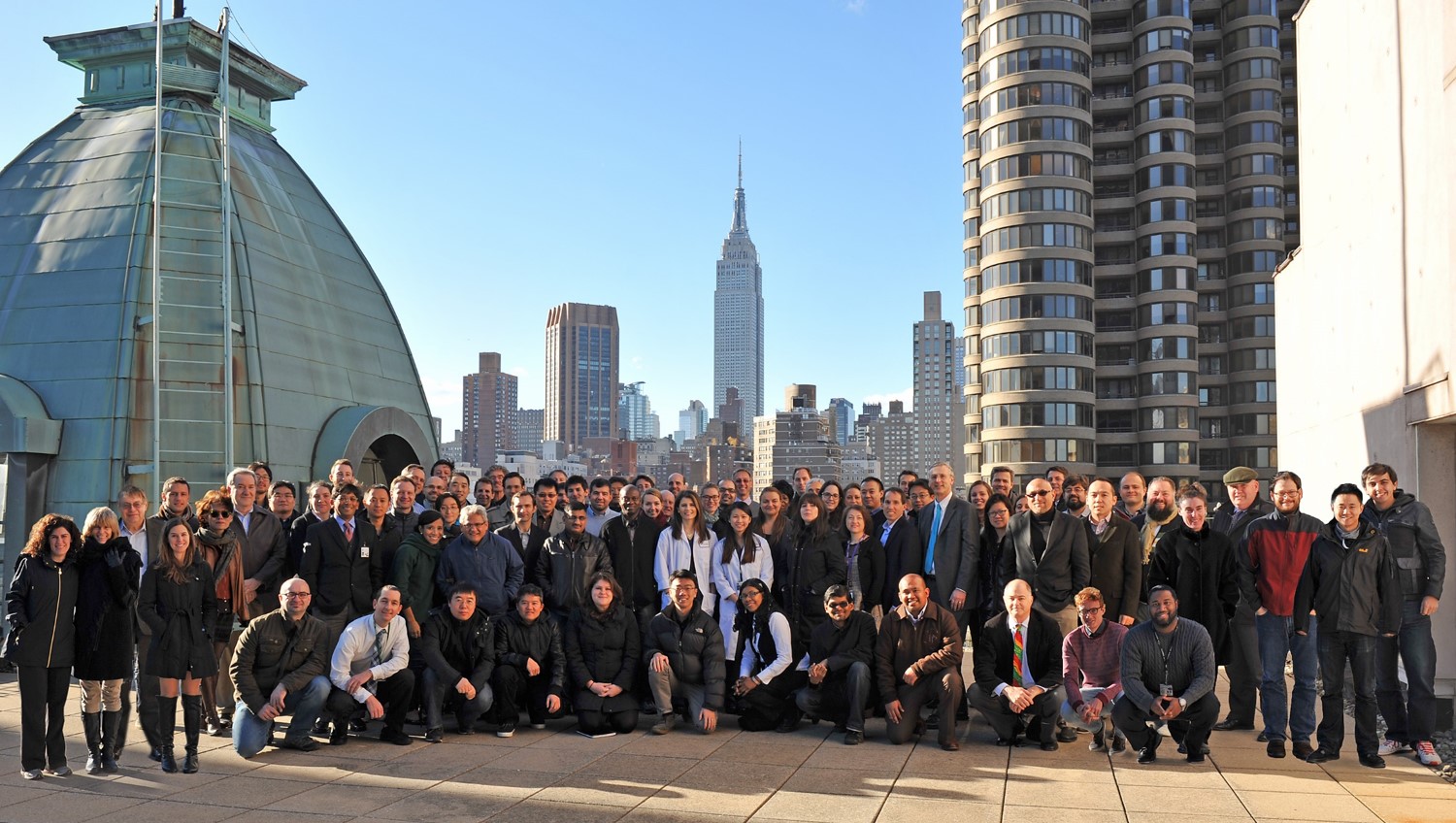
MRMH: Do you think there is a need for a specialized journal based on AI methodologies?
DS: Various bodies in the Society – our publications committee, our editors, our board of trustees, etc – are currently looking into our portfolio of Society journals. First of all, it must be said that our current journals have both time-tested and ongoing value. They have more than just impact factor – they have long-lasting impact. Manuscripts in MRM and JMRI tend to be cited for a long time after they are published, and this is something of which we are exceedingly proud. At the same time, we are looking into whether we would benefit from a third Society journal. It is a little too early to decide if we want a machine-learning focused journal in particular – the RSNA, for example, has just launched such a journal – but this and other possible models are on the table and under active consideration. I would welcome thoughts on this front from the membership. I don’t want us to take a ‘me too’ approach just because other societies have developed new journals. Scientists should be wary of hype at any time, and this time in particular is marked by so much buzz and creative ferment that we will need to apply the best of our high standards to separate the good ideas from the chaff and the churn. At the end of the day, we are tool-builders and tool-users, and AI represents a suite of powerful new tools that are newly at our disposal. I believe that the role of the ISMRM should be to enable the innovators in our midst to access these tools as effectively as possible, and to do the greatest possible good with them.
MRMH: Switching from the broad horizon to the relatively near future, and trying to get some parting thoughts – is there something specific that you are looking forward to at this year’s ISMRM annual meeting?
DS: Our Annual Meeting Program Chair Karla Miller has done a remarkable job in preparing the Paris meeting, together with the hard-working members of the AMPC and with our remarkable Central Office. I am looking forward to year two of secret sessions, and to the newly introduced member-initiated symposia. Keep an eye out for our new President’s Lecture on Wednesday, which will kick off a day-long (and, I hope, ongoing) focus on diversity, inclusion, and unconscious bias in our Society. You will find any number of reflections of our new strategic plan at the meeting, including evidence of and responses to disruption, as well as attempts to foster connections within and beyond the traditional scope of MR. And one other plug: Do not miss the closing party this year. The venue for the party is at a bit of a remove from the convention center, but it is worth the trip. Once you go inside, you’ll find yourself somewhere truly unique – like nowhere the ISMRM has ever been before. It will, I suppose, be a little like imaging itself: you have to see it to believe it!




